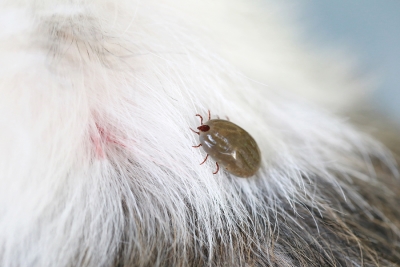Removing Ticks from Your Dog
Removing Ticks from Your Dog
When your pooch is enjoying outdoor adventures, there are a few risks pet parents need to keep an eye on. One very important one is ticks. Even tick protection products can’t completely prevent your dog from getting a tick. If one is left in place, it can cause infections in your dog and even switch hosts to a family member. It is also a good idea to check your dog daily if it spends a lot of time outdoors or after any major outdoor outings. Regular grooming appointments can also aid in finding ticks. If you find a tick on your dog, it is important to follow these steps for removal and remember, you can always visit a local veterinarian for a demonstration.
Gather Your Tools
Removing a tick is a straightforward process, but your dog may not love it. It is a good idea to have all of your tools in place before you start so that you can get everything done quickly. You will need gloves, antiseptic, isopropyl alcohol, a container in which to store the tick, and a pair of tweezers or a commercial tick removal product. You can always visit your veterinarian to find out which tick removal products they carry or recommend.
Remove the Tick
Whether you’re using tweezers or a commercial tick remover, always wear gloves to prevent exposure to disease. To remove the tick with tweezers, place them firmly against your dog’s skin and grasp the tick, taking care not to pinch your dog in the process. Pull the tick out in a steady motion, trying not to move too quickly or squeeze too hard, as you could leave a portion of the tick under the skin. When using a commercial tick remover, follow the instructions on the packaging. When the tick has been removed, clean your dog’s skin with antiseptic.
Store the Tick
Put the tick in a small container and pour isopropyl alcohol into the container. This will kill the tick. Write the date on the container and keep it in case your dog begins to exhibit symptoms. It can help your vet to see the tick if your dog has picked up a possible infection.

